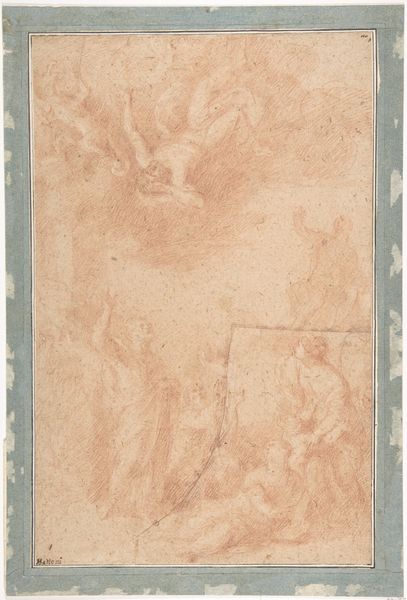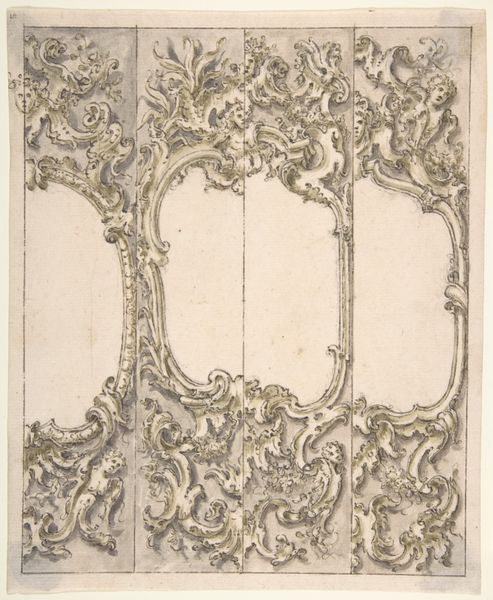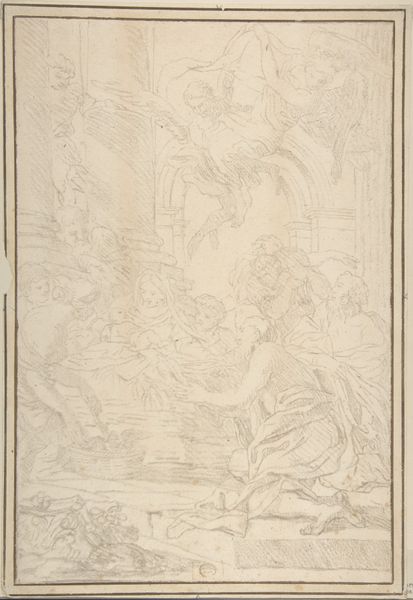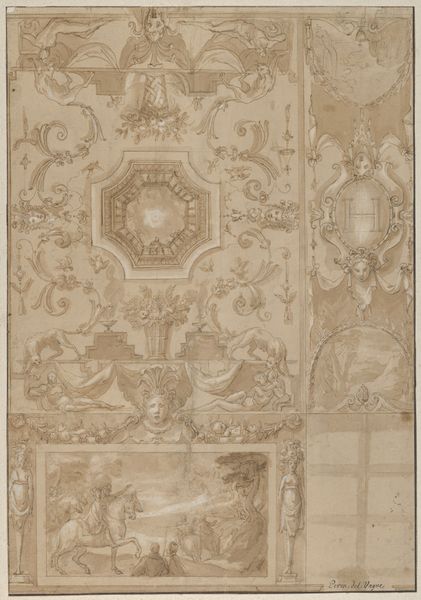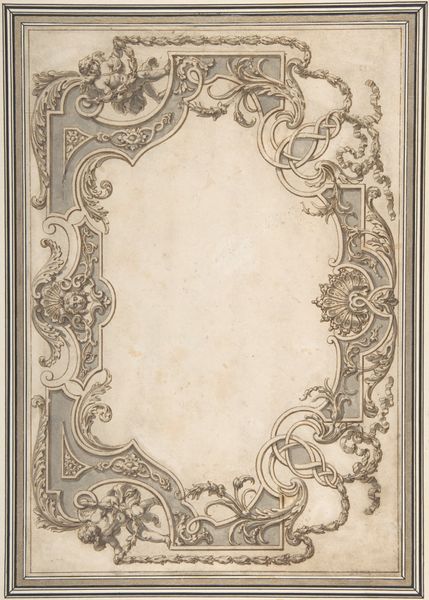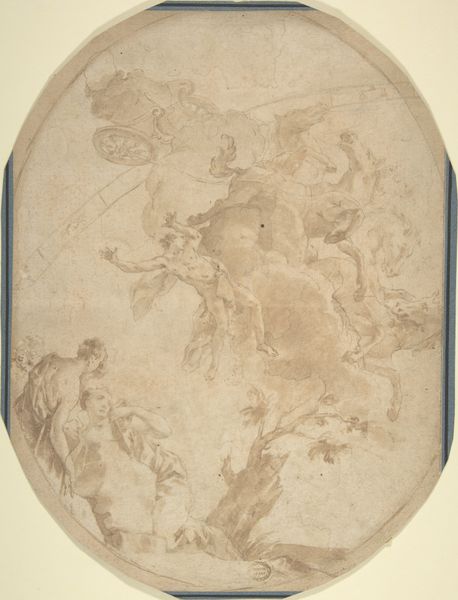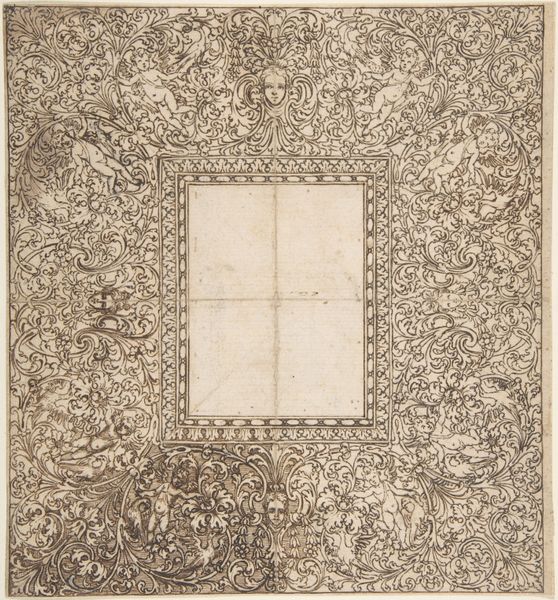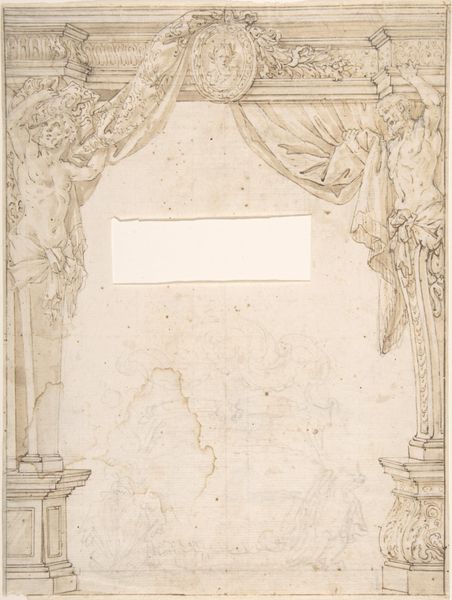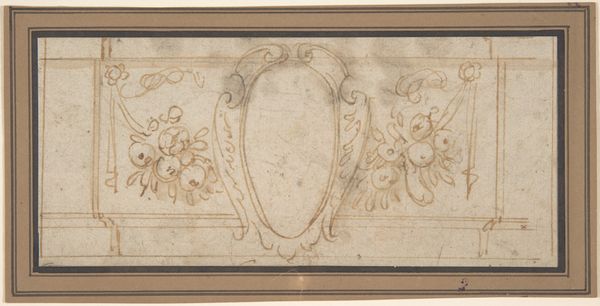
Design for Ornamental Border with Foliage, Putti and a Lion's Head 1535 - 1607
0:00
0:00
drawing, print
#
drawing
# print
#
landscape
#
mannerism
#
figuration
#
form
#
11_renaissance
#
line
Dimensions: sheet: 12 1/8 x 6 7/16 in. (30.8 x 16.3 cm)
Copyright: Public Domain
Editor: This drawing, “Design for Ornamental Border with Foliage, Putti and a Lion's Head,” is attributed to Alessandro Allori and dates to the late 16th or early 17th century. The medium appears to be ink on paper, and it features a rather ornate border with putti. The limited color palette lends the work a somber quality, despite its decorative intention. What stands out to you, and how do you interpret this work within its historical context? Curator: Thank you, that's a fine description. I see this drawing as a fascinating window into the social and political dynamics of the Renaissance. Consider how ornament functioned: It wasn’t just about beauty, was it? Who were these decorative borders meant to serve, and what narratives did they reinforce through imagery like putti and lions? How did these images perpetuate or challenge power structures, particularly in relation to religious doctrine? Editor: That’s interesting. I hadn’t considered the social implications. I suppose I saw it as simply decorative. You're suggesting the choice of foliage, the cherubic figures, and even the lion’s head was loaded with meaning? Curator: Absolutely. And whose meanings were they? Who got to decide what those symbols meant and how they would be interpreted? And how might we, as contemporary viewers, reclaim or reinterpret those symbols to reflect our own social and political realities? Does the symbolism empower, or is it just an outdated relic? Editor: So, even a design for a border has a political voice, whether intentional or not? I suppose, then, art really is never neutral. Curator: Exactly. Reflect on whose stories are framed and whose are excluded in the history of art. Editor: This perspective really changes how I view the work; I now consider whose power is enhanced by this type of decoration. Curator: Hopefully, this nuanced dialogue sheds light on decorative traditions, encouraging us to ask crucial questions about identity, representation, and the subtle politics embedded within art.
Comments
No comments
Be the first to comment and join the conversation on the ultimate creative platform.
